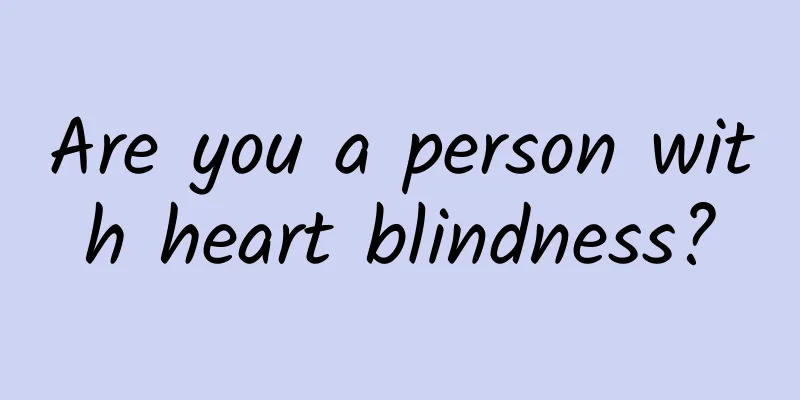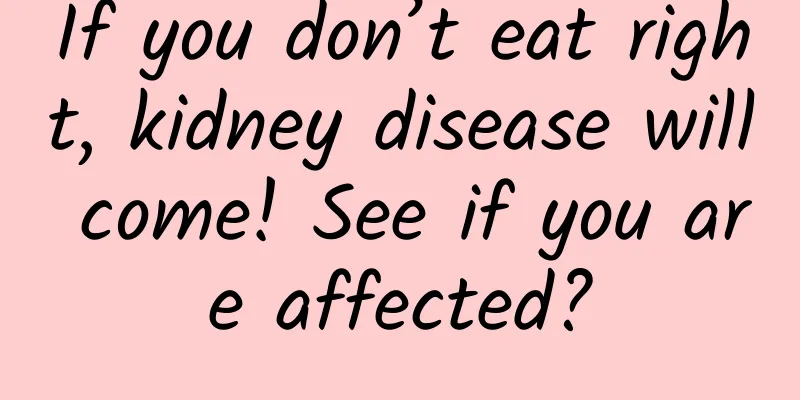Are you a person with heart blindness?

|
Leviathan Press: Mind blindness, also known as aphantasia, means that people with this disease cannot imagine visually, such as being unable to recall the specific appearance of an acquaintance's face. Some people even say that they can accurately recall the color of someone's eyes or hair, but they lack the ability to construct a complete facial portrait. Some people may think of face blindness. For example, in most cases, I can easily recall the faces of people I have seen, but there are exceptions - that is, I can't remember what the person I have seen looks like. Dr. Adam Zeman didn't think much about the "mind's eye" until he met a person who was missing it. In 2005, the British neurologist met a patient who said that a small operation had deprived him of the ability to imagine images. In the 16 years since the first patient, Zeman and his colleagues have heard from more than 12,000 people who say they don’t have any mind cameras like this one. Scientists estimate that tens of millions of people have the condition, which they call aphantasia, and millions more suffer from unusually intense mental imagery, called hyperphantasia. In their latest research, Zeman and his colleagues are gathering clues about how changes in neural connections between the visual center and other areas of the brain cause these two symptoms. They are beginning to explore how a certain link in the neural network can activate other senses in the brain, such as hearing. Ultimately, this research may even make it possible to use magnetic pulses to enhance the mind's eye and ear. “As far as I know, this is not a disease,” said Dr. Zeman, a cognitive scientist at the University of Exeter in the United Kingdom. “It’s an interesting variation in human experience.” The first patient to whom Zeman's heart blindness was brought to his attention was a retired building surveyor who lost his imaginary eye after a minor heart operation. Zeman called him MX to protect the patient's privacy. © Richard A. Chance as MX He was unable to form mental images when thinking of people or objects, even though his visual memory was intact. MX could answer factual questions, such as whether former British Prime Minister Tony Blair had light eyes (yes). MX could even solve problems that required rotating an image in his mind, even though he couldn't imagine it. After I came across the MX case study in 2010 and wrote a column about it for Discover magazine, I received emails from readers who had similar experiences, but with one significant difference: They had never been able to form a mental image in the first place. I forwarded this information to Zeman, who surveyed 21 of my readers. In a 2015 report, he and his colleagues proposed that these readers all shared a common symptom, which the researchers called heart blindness. I reported on this second study for The New York Times, and other journalists did the same for their own publications. Zeman was flooded with emails. To better understand acardia, Zeman and his colleagues asked study participants to fill out questionnaires. One described the condition as feeling the shape of an apple in the dark. Another said it was "thinking through radio waves." © Life After Tech The vast majority of people who report lacking a mind's eye do not remember ever having the ability, suggesting that they are born without it. However, like MX, they have almost no difficulty recalling what they saw. For example, when asked whether grass or pine needles are a darker shade of green, they correctly answer that pine needles are darker. On the other hand, people with acardiac blindness are less able to remember details of their own lives than others. This may be because recalling our own experiences (i.e., episodic memory) relies more on the eye of imagination than on remembering facts about the world. To their surprise, Zeman and his colleagues also came across people who seemed to have the opposite of MX: They had intense visions, a condition scientists call hyperaesthesia. Joel Pearson, a cognitive neuroscientist at the University of New South Wales who has been studying mental imagery since 2005, says hyper-parenchyma is about more than just having an active imagination. “It’s like having a very vivid dream and not being sure it’s real,” he says. “Or like watching a movie and being able to replay it in your mind again and it’s just as real as the first time.” Based on the survey, Zeman and his colleagues estimated that 2.6% of the population has hyperarousal and 0.7% has psychic blindness. © Sophie Wolfson Now Zeman and Pearson are studying a wider range of people who experience extreme mental images. Thomas Ebeyer of Kitchener, Ontario, Canada, one of the 21 patients with aphantasia that Zeman originally studied, has created a website called the Aphantasia Network (aphantasia.com), which has grown into a gathering place for patients and researchers. Visitors can take psychological surveys online, learn about the condition, and join forum discussions where people chat about everything from dreams to relationships. So far, more than 150,000 people have taken the survey, and more than 20,000 have scores indicating aphantasia. “This is truly a global human phenomenon,” Ebieh said. “I’ve heard from people everywhere, from Madagascar to South Korea to California.” His questionnaires reveal that mind blindness can affect other senses besides vision. "If I ask you to imagine your favorite song, most people can hear the music in their head, but I can't," Ebieh said. But some people who come to Ebieh's site say they can do it. Some people can't hear the sounds of their imagination, but their imagination eye works well. Pearson said that while such surveys can provide useful information, they can only provide a crude, subjective look at what people think because they rely on volunteers to rate themselves. “Your three points might be the same as my four points,” he said. Pearson has developed methods to study heart blindness and hyperaesthesia that don’t rely solely on questionnaires. In one experiment, he took advantage of the theory that our pupils automatically contract when we see bright objects. When Pearson and his colleagues asked most people to imagine a white triangle, their pupils also contracted. But most of the heart-blind people they studied had no such reaction. Their pupils remained open, no matter how hard they tried to imagine the white triangle. In another experiment, Pearson exploited the fact that when people see scary scenes, their skin becomes more conductive. Pearson and his colleagues monitored the skin of volunteers as they read horror stories projected on a screen. When most people read scary plots, such as being attacked by a shark, their skin conductance spiked. But the heart-blind people did not. This research suggests that the imaginary eye acts as an emotional amplifier, intensifying both the positive and negative emotions that arise from our experiences. People with heart blindness can get the same feelings from their experiences, but they don't amplify them later through mental imagery. Researchers have also begun using brain scanning techniques to look for the neural circuits that underlie mind blindness and hyperaesthesia. So far, the research suggests that mental images emerge from a network of brain regions that communicate with each other. Decision-making areas in the front of the brain send signals to areas in the back that normally perceive information from the eyes. These top-down signals cause the visual area to produce images that aren't there. In a study published in May, Zeman and his colleagues scanned the brains of 24 people with heart blindness, 25 people with hyperarousal, and 20 normal people. The scientists had volunteers lie in a scanner and let them imagine anything they wanted. Those with high hallucinations showed stronger activity in an area that connects the front and back of the brain. This area may be able to send more effective signals from decision-making areas in the front of the brain to visual centers in the back. The power of the imaginative eye may have subtle effects on people’s lives. Zeman’s questionnaires showed that people with heart blindness were more likely to pursue careers in science or mathematics. Genomics pioneer Craig Venter even asserted that heart blindness helped him as a scientist by eliminating distractions. But it was far from absolute. Charles Darwin left behind writings that hint at hyperaesthesia: once, when asked to recall what was on his dining table that morning, he said it was “as clear as if I had a picture before me.” Likewise, those who can generate vivid mental images do not have a monopoly on jobs that require creativity. Ed Catmull, the former president of Pixar, announced in 2019 that he had developed mental blindness. For those who use their imaginary eyes to see, mind blindness may seem like a disease that is not common. But Zeman's research suggests that this is not the case. In fact, mind blindness may even have some advantages over hyperarousal. Hyperaesthesia creates images that seem too real, which can lead to memory distortion. Similarly, people without an imaginary eye may escape some of the burden of reliving trauma because they don't have to reenact these experiences visually. “What’s interesting is that they’re really good at letting go of the past and moving on,” Zeman said. “One wonders if that’s because they’re less disturbed by some of the images that come to mind for many of us, the images that bring up regret and longing.” People with heart blindness may one day be able to imagine eyes they never had, says Pearson. He has found that applying noninvasive magnetic pulses to the visual centers in the brains of normal people can make their mental images more vivid. He suspects that the pulses quiet activity in the visual centers, making them more receptive to requests from the front of the brain. In theory, people without the imaginative eye could use magnetic pulses combined with cognitive training to strengthen the neural circuits needed for mental imagery. But Pearson is unsure whether such a procedure would be the right approach. If a person regrets having developed the ability to form intrusive images, scientists might not be able to close the imaginative eye again. “There’s a dangerous side to that,” he says. For his part, Ebieh said he would consider Pearson's proposed treatment only if his imaginary vision lasted only a few days. He didn't want to be bothered by unwanted hallucinations. He said: “If you could take this pill and have the ability to have mental images forever, I probably wouldn’t take the risk.” By Carl Zimmer Translated by Leeway Proofreading/boomchacha Original article/medium.com/the-new-york-times/many-people-have-a-vivid-minds-eye-while-others-have-none-at-all-7f9aa5406ba1 This article is based on the Creative Commons License (BY-NC) and is published by Leeway on Leviathan The article only reflects the author's views and does not necessarily represent the position of Leviathan |
>>: Why is it that people are addicted to the unstoppable synthesis of watermelons?
Recommend
Dry eyes during menstruation
Many people have experienced dry, sore and painfu...
The difference between menstrual symptoms and early pregnancy
The difference between the symptoms of pregnancy ...
How long does it take for nipples to turn dark during pregnancy?
During pregnancy, under the action of estrogen, t...
What are the dangers of having abortions twice a year?
Women who have an unexpected pregnancy need abort...
Do these 4 things regularly to make you look older than your peers! Huaxi doctors: You can effectively fight aging without spending money
Next Saturday is New Year’s Eve! During the Chine...
What are the symptoms of excessive stress for high school girls?
Because high school life is always full of intens...
Olive oil can be eaten directly and has great beauty and skin care effects!
Olive oil is a natural skin care product with exc...
Is 1.0cm of endometrium normal?
Endometrial thickness is very common, and the adv...
What are the symptoms of no fetal heartbeat or fetal bud?
Nowadays, medical resources are very developed. P...
Is 5mm endometrium normal?
In the female body structure, the uterus is a spe...
This niche vegetable is extremely high in selenium and helps with anti-aging! You will regret not eating it this season...
When it comes to delicious melons, everyone will ...
What happens when female hormones burst
Night is a special time period. Women at night wi...
Why is the fetus moving frequently when the due date is approaching?
As the saying goes, it takes ten months of pregna...
Is foot bathing good for the fallopian tubes?
Nowadays people's living habits are very irre...
There is a science to preventing common infectious diseases in spring
This is the 3107th article of Da Yi Xiao Hu Sprin...







![[Medical Q&A] Why is "sinus rhythm" written on the electrocardiogram report?](/upload/images/67f0f6238b653.webp)

